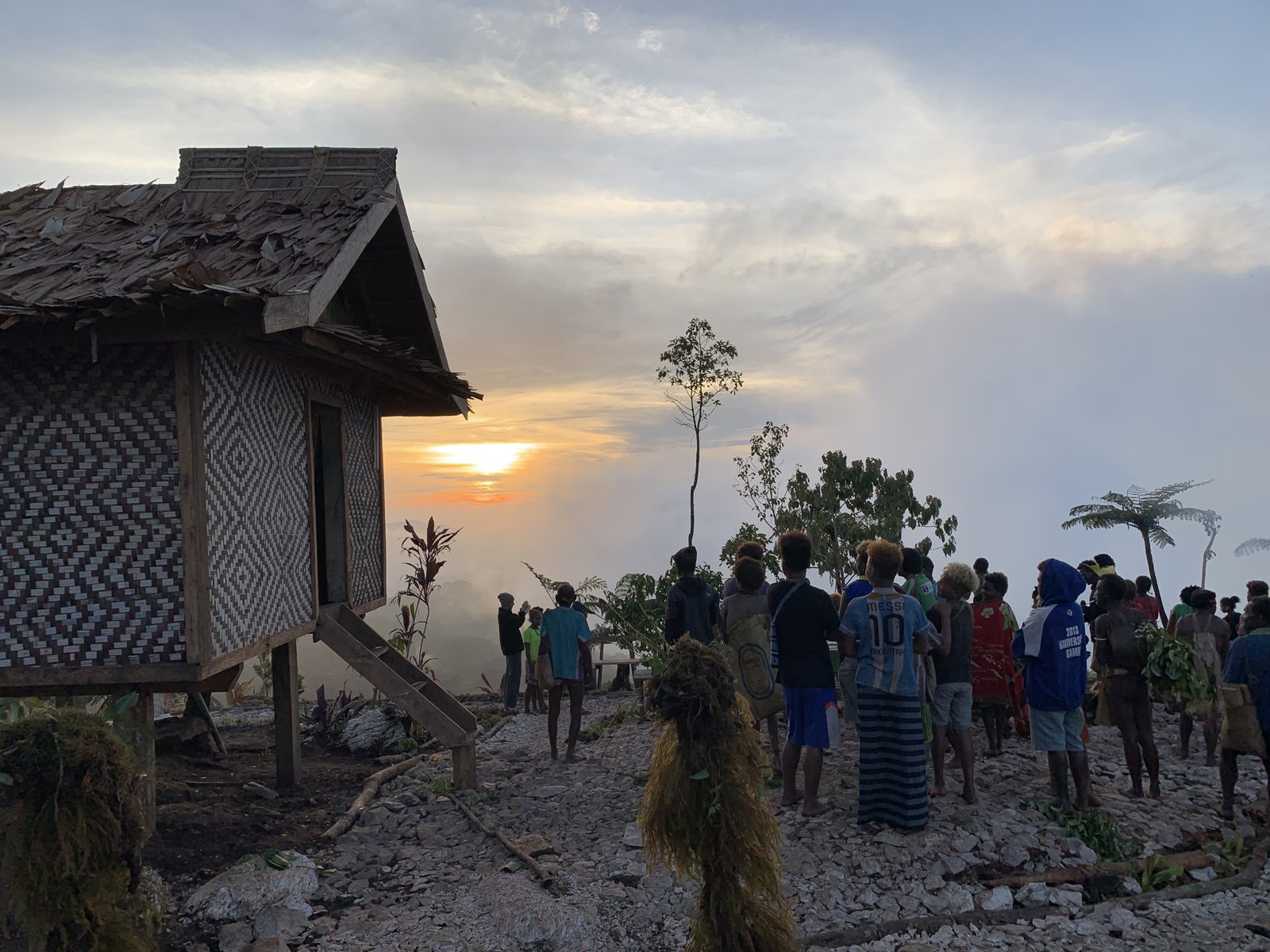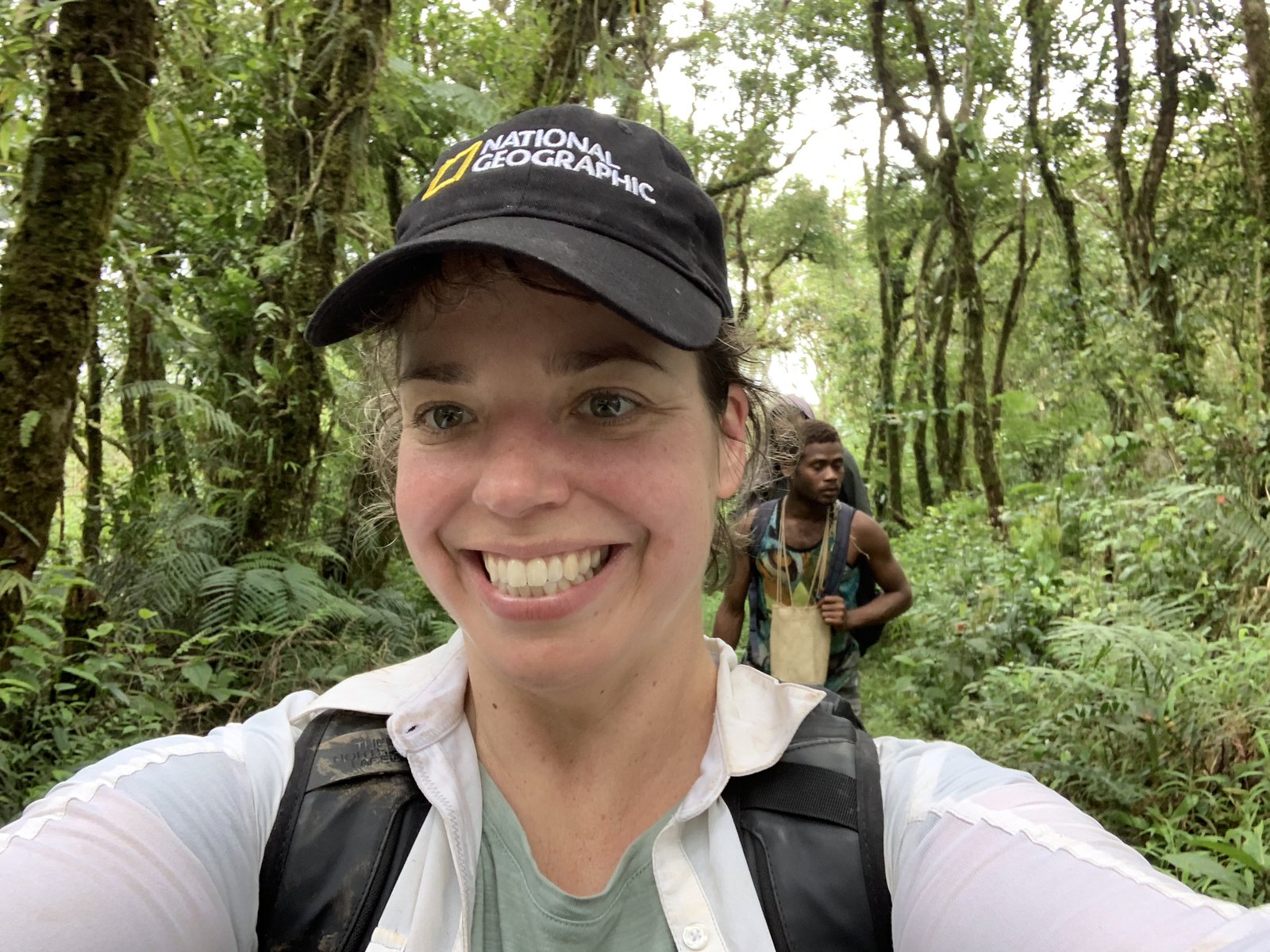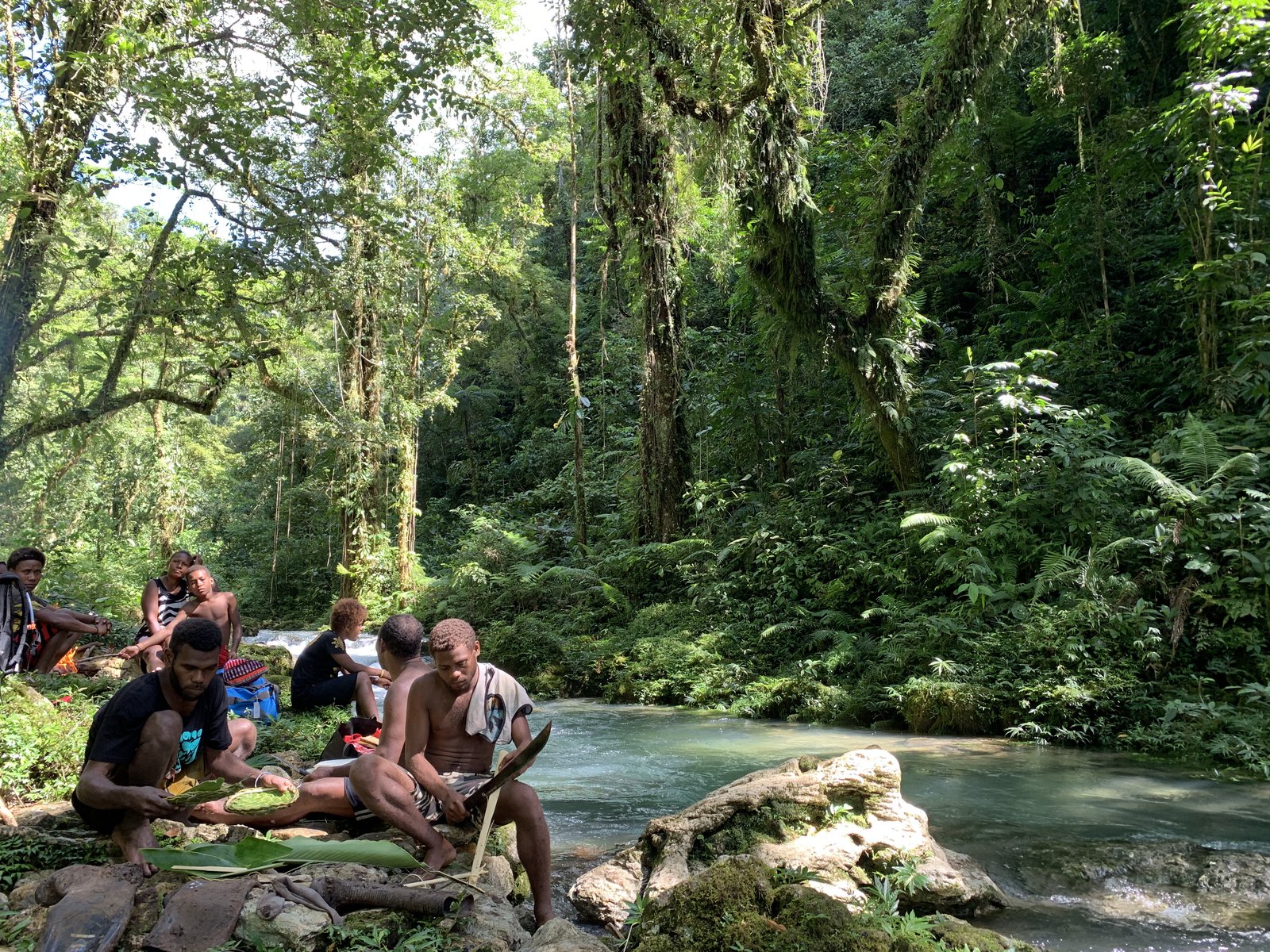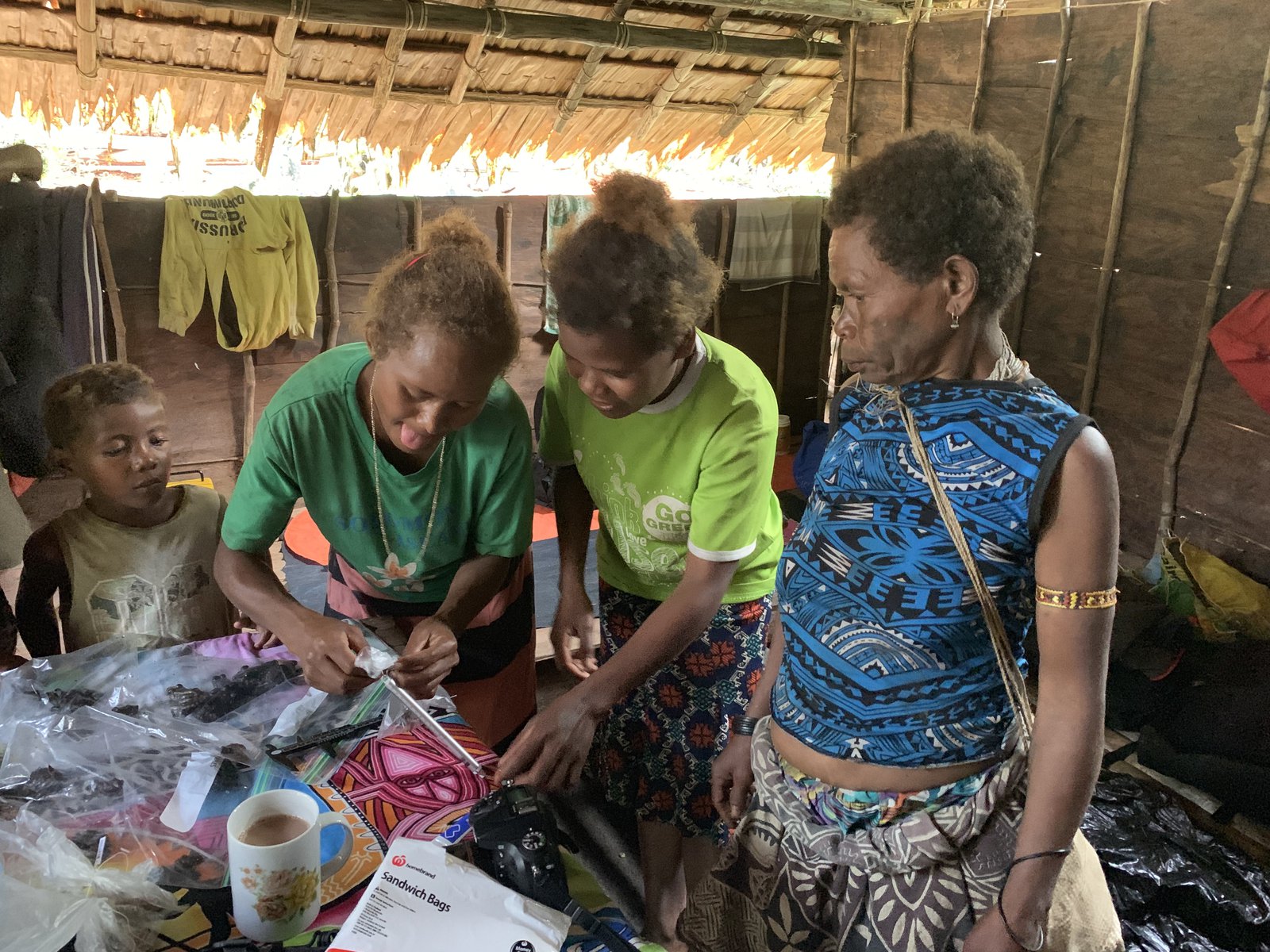Collaborative frog surveys in the clouds

The sun peaks through the thick clouds at Alalau Fulanitofe, Malaita.
Image: Jodi Rowley© Australian Museum
The forests of the Solomon Islands support a remarkably unique and varied array of frog species. Twenty-one native frog species are currently known to science from the Solomon Islands, but it is likely that, particularly in high-elevation forests in the interior of the larger islands, there are frog species that await scientific discovery.

Dr Jodi Rowley treks through the trees in East Kwaio.
Image: Jodi Rowley© Australian Museum
One such region- thick with pristine forest, and reaching up into the clouds, is East Kwaio, on the island of Malaita. As part of collaborative biodiversity research led by the Kwaio community, we’ve just completed the first scientific survey of the frogs (or We`e in Kwaio) of East Kwaio, Malaita, with a focus on high-elevation forests. Our goal is to work together, linking scientific and traditional knowledge, to document the frog species protected in three new conservation reserves. These reserves have been established by local tribes on their Kastom land to simultaneously protect their environment and culture from threatening processes, including logging.

A stream flows through the lush forest at Aifasu, Malaita.
Image: Jodi Rowley© Australian Museum
The Island of Malaita is the third largest and fourth highest island in the Solomon Islands. The frogs of the island have received very little scientific attention, with most scientific surveys conducted at lower elevations, leaving the frogs of the interior mountains largely unknown to science. While the frogs of these forests are well-known by those that live in them, there is an urgent need to more formally document the biodiversity of these forests as they are facing increasing pressure from logging and human activities. It’s vital that the frogs of the area are better understood so that they can be prioritised in conservation decisions.

Traditional dwelling with a view, Alalau Fulanitofe, Malaita.
Image: Jodi Rowley© Australian Museum
Excited and honoured to accept an invitation to work with the Kwaio community in surveying frogs on their land, we took three flights (the last in a plane little bigger than a minivan, landing on a grass runway with wallowing pigs) and climbed from the coast into the mountains. The climb was steep and muddy, but gradually we hiked from the coastal gardens up and up into some of the best forest we’d ever seen. Streams, crystal-clear with limestone bedrock that gave them a light blue hue, ran through galleries of trees that were dripping with ferns, orchids and different-coloured moss.

Lunch stop at stream between Atoifi to Kwainaa’asi, Malaita.
Image: Jodi Rowley© Australian Museum
Over the course of eight nights, teams from our collaborative group (often joined by local kids!) surveyed around four main sites in the forests of East Kwaio. The most exciting frog surveys were in moss forests at the top of the mountains; cold, remote places, shrouded in cloud and so poorly-known scientifically.

Tim Cutajar and Kwaio community members conduct frog research at Kafurumu, Malaita.
Image: Jodi Rowley© Australian Museum
The frog fauna we encountered was remarkable in both its diversity and adaptations. The most iconic frog of the Solomon Islands, the Solomon Island Eyelash Frog (Cornufer guentheri), known in Kwaio as the Kule`a, was one of the most common. A large, ground-dwelling frog adept at impersonating a leaf, the Eyelash Frog tends to sit motionless on the floor, hiding in plain sight, waiting for unwitting insects to crawl past them, and become their dinner. Displaying the full spectrum of possible leaf colours- brown, red, yellow, green, cream and orange – no two Eyelash Frogs looked the same. It was so great to see how abundant this species was throughout the forest.

Tim Cutajar holds an array of diverse and colourful Eyelash Frogs.
Image: Jodi Rowley© Australian Museum
More often heard than seen, the Solomon Island Giant Treefrog (Cornufer hedigeri), known in Kwaio as the Da`a Da`a, is an enormous frog adapted for life in the canopy. With huge pads on its toes to help it climb, this species can be heard calling from high up in the canopy, with a booming “gunk, gunk, gunk”. The San Cristobel Frog (Papuarana kreffti), known in Kwaio as the Maatotonga, is a large brown frog with a powerful jump, and the only member of the frog family Randidae known from the Solomon Islands. Many more frog species were observed, their shrill cries echoing through the forest in the late afternoon and early evening- the sounds of a healthy forest.

Kwaoi women measure frogs in Aifasu, Malaita.
Image: Jodi Rowley© Australian Museum
In the Solomon Islands, frogs are some of the most abundant terrestrial vertebrates, and are vitally important to healthy ecosystem function. They are also a part of daily life for the Kwaio, and details of the habits and calls of different frog species are well-known to them, forming important parts of their culture. Kwaio frog lore is proving vital in filling in the gaps in our scientific knowledge of these otherwise very poorly-understood frogs.

A Kwaio man scribes data during as frog suirvey at Aifasu, Malaita.
Image: Jodi Rowley© Australian Museum
While we are now back at the Australian Museum Research Institute, our collaboration with the Kwaio community is just beginning as we work to scientifically identify all the amazing amphibians we encountered in these important forests. We hope to continue this exciting collaboration to record, understand and protect the frogs of East Kwaio and, ultimately, the unique forests they call home.
Dr Jodi Rowley, Australian Museum Research Institute & UNSW Sydney.
Timothy Cutajar, Australian Museum Research Institute.
With Tommy Esau, Esau Kekeubata, Dorothy, Maasafi Alabai (Kwainaa’isi Cultural Centre), and many more.

